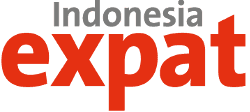The rapid advancement of digital technology has revolutionised the way governments operate around the world. In Indonesia, various local administrations have embraced these changes by transitioning from manual to digital systems to improve transparency, accountability, and service delivery. One such example is Langkat Regency, which has introduced an integrated digital platform combining employee performance monitoring and population administration services. This innovation represents a major stride towards smarter governance and more efficient public service systems.
The Role of Digital Governance in Regional Development
Governments today are under increasing pressure to deliver services that are fast, efficient, and accessible. In a decentralised system like Indonesia’s, where local governments bear much of the responsibility for public administration, digital tools offer a way to meet these expectations.
Langkat Regency’s integrated digital platform, hosted at ekinerja.langkatkab.go.id/sipeduk, exemplifies this transformation. Though relatively new, this system demonstrates how technology can be leveraged to streamline internal government processes while also providing accessible services to the public.
Understanding the Platform: Two Systems in One
The platform combines two crucial government functions: performance evaluation and civil population administration. On one side, it acts as an e-Kinerja system – a digital tool for recording and evaluating the performance of civil servants. On the other, it serves as SIPEDUK, a system that simplifies population data management and administrative services for residents.
The e-Kinerja component ensures that civil servants log their daily tasks, enabling supervisors to evaluate their productivity, punctuality, and efficiency. This approach reduces subjectivity in performance reviews and provides a clear data trail for decision-making in human resource development. The SIPEDUK side, meanwhile, allows for the management of population documents such as birth certificates, identity cards, and family registries. By digitising these services, the platform helps eliminate bottlenecks and long wait times often associated with manual bureaucracy.
Key Benefits of Integration
The integration of e-Kinerja and SIPEDUK into a single digital platform offers several advantages:
1. Streamlined Bureaucracy
One of the biggest pain points in traditional governance systems is inefficiency due to redundant paperwork and poor communication between departments. The integrated platform addresses this by automating many of the tasks involved in public administration. Civil servants no longer have to toggle between different systems or rely on paper-based processes to carry out their duties.
2. Increased Accountability
Performance evaluation in government institutions can often be subjective. The digital system introduces objectivity by automatically tracking daily activities, deadlines, and outcomes. Supervisors can view real-time data and identify areas of concern or excellence, making it easier to reward high performance and address underperformance.
3. Enhanced Public Service
For the public, dealing with government institutions often means long queues, complex procedures, and unclear requirements. The SIPEDUK aspect of the platform simplifies these processes by offering a user-friendly interface where citizens can apply for essential documents online, check the status of applications, and receive notifications – all from the comfort of their homes.
4. Data Accuracy and Security
Another important feature is the synchronisation of employee activity with population data, which reduces errors and inconsistencies. Built-in data validation checks improve the accuracy of public records, while integrated cybersecurity protocols ensure that sensitive information is protected.
Practical Implications for Civil Servants
For government employees, the system offers a more structured work environment. Daily activity reports can be submitted online and reviewed promptly by supervisors. This not only encourages better time management but also fosters a culture of professionalism.
Civil servants in Langkat Regency are now able to monitor their own performance metrics and compare them with departmental benchmarks. This creates a transparent and competitive atmosphere where merit is clearly rewarded. Moreover, the system’s ease of use reduces administrative burdens, freeing up more time for employees to engage with community-focused initiatives.
Challenges and Areas for Improvement
Despite the clear benefits, implementing a system like the one found at ekinerja.langkatkab.go.id/sipeduk comes with its challenges.
1. Digital Literacy
One of the key hurdles in implementing such a platform is the varying level of digital literacy among civil servants and citizens. Not all employees are tech-savvy, and older residents might struggle with using online systems for administrative tasks. Continuous training and public awareness campaigns are essential to address this gap.
2. Infrastructure Limitations
Stable internet connectivity and access to digital devices remain issues in some parts of Langkat Regency, particularly in remote or rural areas. Without proper infrastructure, the effectiveness of the system can be significantly undermined.
3. Maintenance and Scalability
Another concern is the ongoing maintenance of the platform. As user demand grows and new features are added, regular updates and technical support will be necessary to ensure smooth operation. Scalability should also be a priority, especially if other departments plan to integrate their services into the system in future.
A Model for Other Regions
Langkat Regency’s digital innovation can serve as a valuable model for other local governments across Indonesia. By combining employee performance monitoring with population administration, the system not only improves operational efficiency but also strengthens the relationship between the government and its citizens.
The success of platforms like ekinerja.langkatkab.go.id/sipeduk could inspire a wave of digital transformation in public sectors nationwide. When implemented with the right infrastructure, training, and support, such systems can bring about long-term improvements in public service delivery and governance.
Conclusion: A Step Towards Smarter Governance
Langkat Regency’s integrated platform is more than just a digital convenience — it is a foundational step towards smarter, more accountable, and people-centred governance. By digitising both internal administrative functions and external services, the system reduces inefficiencies, enhances data accuracy, and promotes a more responsive government.
Although there are challenges to be addressed, the benefits of this initiative are already evident. As the system matures and evolves, it could become a blueprint for other regions seeking to modernise their public service delivery. With platforms like ekinerja.langkatkab.go.id/sipeduk, the future of local governance in Indonesia is looking increasingly digital — and decidedly brighter.




